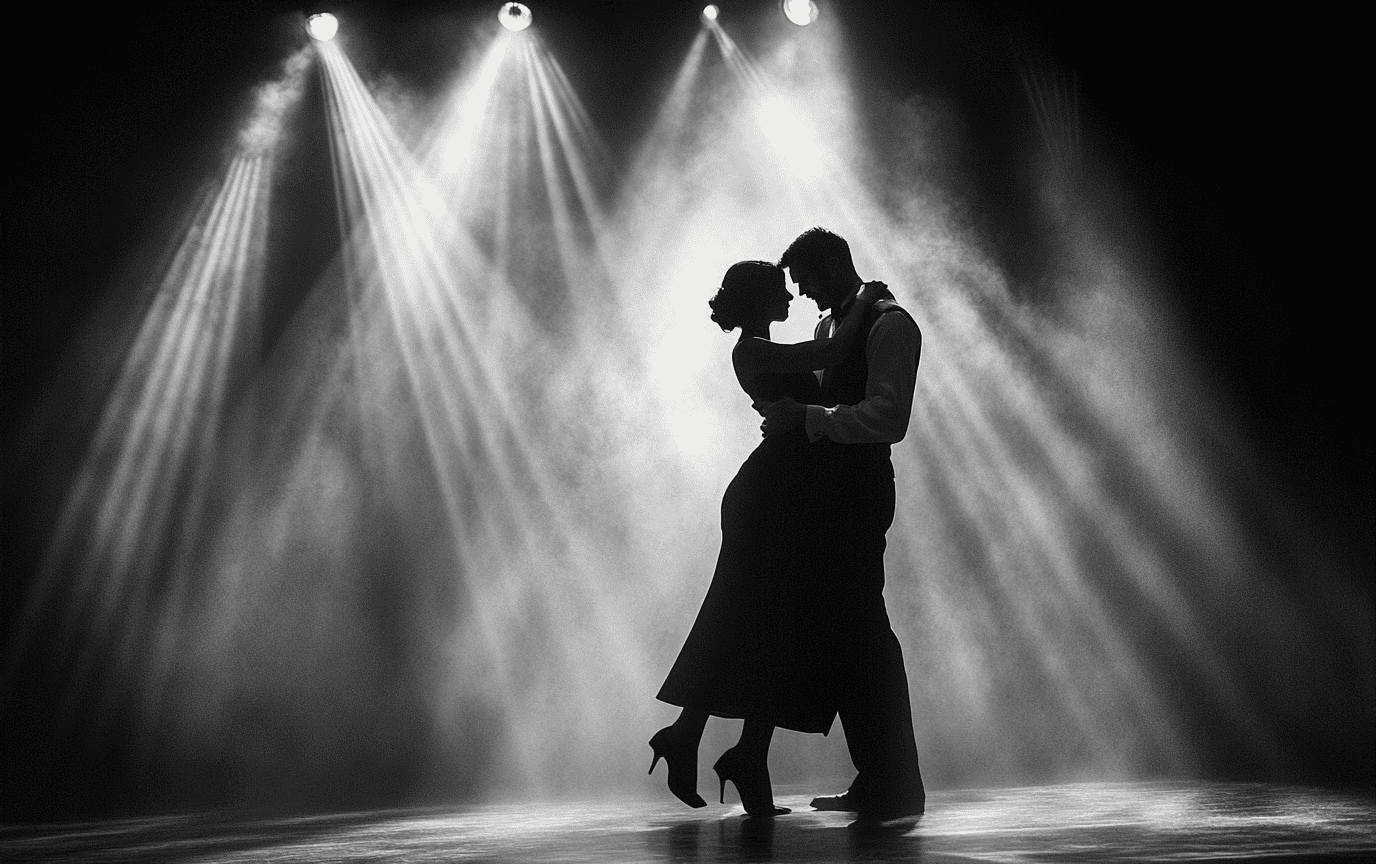Understanding Argentinian Tango: A Cultural Phenomenon
Argentinian Tango, often described as “a secret danced between two people,” is more than just a dance style; it’s an expression of passion, sensuality, and cultural heritage. Born in the late 19th century in the vibrant streets of Buenos Aires and Montevideo, this dance form has evolved into a global phenomenon, captivating hearts with its unique blend of African, European, and indigenous influences.
As you stroll through the cobblestone streets of Buenos Aires, the air thick with nostalgia, the sounds of tango musicians waft, enticing passersby to pause, listen, and maybe even dance. It’s a calling. A heartbeat. But, what lies beneath the surface of this seductive dance, where every step and every note tells a story deeply rooted in time and culture?
History of Argentinian Tango
The roots of Argentinian Tango are deeply intertwined with the cultural tapestry of Argentina. It emerged as a fusion of African candombe, Cuban habanera, and European waltzes and polkas, reflecting the nostalgia and melancholy of European immigrants and former slaves. The dance was birthed in the low-income neighborhoods of Buenos Aires, where the blend of diverse cultural backgrounds created a unique form of expression.
In its early days, Tango was often regarded with disdain by the bourgeoisie, viewed as a dance of the marginalized. During Argentina’s tumultuous political era, Tango was forced underground, whispered between lovers in hidden corners far from judgmental eyes. Yet, like all great art forms, it refused to stay subdued. By the 1980s, Tango experienced a global resurgence, propelled by vibrant performances that showcased its cultural significance and emotional depth.
Cultural Influences
Argentinian Tango is a testament to cultural exchange, blending diverse influences in a way only it can:
African Influence: The rhythmic intensity and emotional depth of Tango owe much to African traditions, particularly candombe. The intricate rhythms of the drums resonated with the souls of dancers, creating an explosive intersection of art and life.
European Influence: European immigrants introduced waltzes and polkas to the blend, weaving in their own memories and experiences. These forms merged with local rhythms to create Tango’s distinctive feel—intimate yet filled with the tension of longing and connection.
Indigenous Influence: The gaucho culture, symbolizing Argentine identity, is reflected in Tango’s machismo and storytelling through dance. Each step embodies the spirit of the country—strong, lyrical, and proud.
Music of Argentinian Tango
The music of Argentinian Tango is as intricate as the dance itself. It is characterized by a strong, repetitive pulse with a 2/4 or 4/4 time signature, often featuring instruments like the bandoneon, violin, and double bass. The bandoneon, an accordion-like instrument, can evoke a range of emotions—joyful, melancholic, or a mixture of both, echoing the complexity of human experience.
Notable composers like Di Sarli, d’Arienzo, Troilo, and Pugliese have contributed to Tango’s rich musical heritage, each leaving their mark with compositions that explore the emotional landscape of the dance. Like a heartbeat, the music pulses with life, inviting dancers to lose themselves and find one another amid the notes. The genre is known for its dynamic shifts and melancholic yet intense mood, making it a perfect accompaniment to the dance’s emotional expression.
The Dance
Argentinian Tango is a partner dance that emphasizes improvisation and connection between partners. It involves a variety of styles, from open to closed embrace, with dancers responding emotionally to the music. Within every flourish and step lies a conversation—unspoken words exchanged between partners, their movements dictated by feelings rather than choreography.
Basic steps include the walk, cross, figure eight, cuts, breaks, and rotation, all performed with a focus on speed and emotional depth. The embrace can be both intimate and empowering, allowing partners to communicate through body language alone. Each turn, each slight shift of weight tells a story, blending technical precision with raw emotion.
The Essence of Connection
“Watch closely,” he says, as they step onto the floor. The crowd holds its breath, their eyes glued to the couple as they become one.
“Can you feel it?” she whispers back, her heart racing with each pulse of the music.
In tango, there is no competition; only connection. The dance is a dialogue of souls, where each partner brings their own story, hopes, and dreams to the floor. It’s a personal expression, made beautiful through shared vulnerability.
Modern Tango and Its Revival
In the 1980s, Tango experienced a global revival, thanks in part to shows like “Tango Argentino.” This resurgence led to the development of Nuevo Tango, which incorporates modern elements while retaining Tango’s improvisational essence. Today, Tango is no longer confined to the streets of Buenos Aires; it’s danced worldwide, with milongas (Tango dance festivals) becoming a staple in many cities.
The fusion continues to evolve, with artists pushing boundaries while honoring tradition. This new wave of Tango captures the heartbeat of today’s society—fueled by technology, yet rooted in deep emotional connections.
Milongas: A Tango Community
At a milonga, the atmosphere is electric. Dancers of all ages gather in dimly lit spaces—where sparkly dresses and polished shoes twirl beneath the glow of chandeliers. It’s a celebration of culture, of community, where the rhythm pulls strangers together.
“Care to dance?” he asks, extending a hand, a smile playing at the corners of his lips.
“Only if you’ll lead,” she replies, her laughter mingling with the music.
The milonga serves as a vibrant platform for both seasoned dancers and newcomers, where the only prerequisite is an eagerness to connect. In this space, judgment evaporates, and joy reigns supreme. The air buzzes with laughter, footsteps, and the passionate embrace of a community forged through dance.
Learning Argentinian Tango
For those interested in learning Tango, it’s essential to start with the basics: posture, the close embrace, and the subtle connection with a partner. Classes typically focus on developing musicality and improvisation, allowing dancers to express themselves freely.
With patience and practice, anyone can master the art of Tango, regardless of age or dance experience. Tango schools thrive in Buenos Aires, each promising a journey that is as personal as it is communal. As one embarks on this path, the transformation is evident—not only in movement but also in emotion.
In every lesson, there’s a discovery. New friendships blossom, self-confidence builds, and the world feels just a bit closer with every dance.
Conclusion
Argentinian Tango is not just a dance; it’s a cultural phenomenon that embodies passion, history, and the beauty of cultural fusion. It speaks to the heart and soul, transcending barriers of language and geography. Whether you’re a seasoned dancer or a curious beginner, Tango offers a journey of discovery and connection that transcends borders and generations.
As you find joy in every step, remember that each dance is a reflection of deeper stories—stories of longing, connection, and the intricate dance of life itself. With its rich history, captivating music, and expressive movements, Argentinian Tango continues to inspire and enthrall audiences worldwide.
Adorned with emotion and heritage, Tango will remain a testament to the power of human expression. As you embrace your partner and sweep across the dance floor, remember: you are part of something much bigger than yourself—a rich legacy that has shaped hearts through generations.
Interested in more insightful reads? Check out our Travel Tips section for the latest advice. For lifestyle inspiration, explore our Lifestyle category, and dive into amazing destinations at Destinations. Don’t forget to connect with us on YouTube, or follow our adventures on Instagram and Pinterest.













